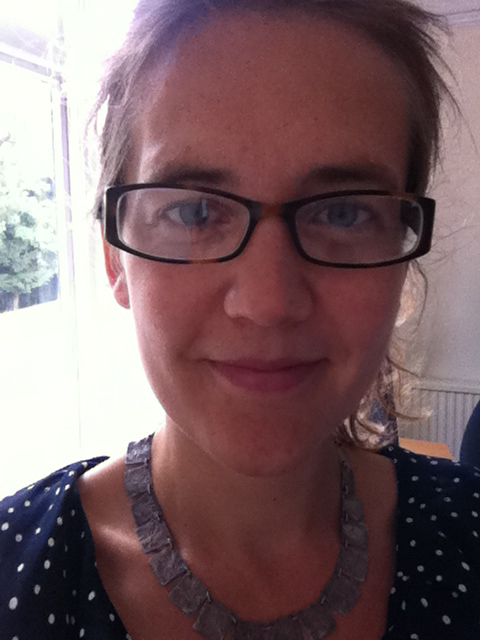What happened when a group of 3 year olds spent a week ‘in residence’ at the Fitzwilliam Museum and Botanic Garden?
Inspired by the ‘My Primary School is at the Museum’ project, educators at the Fitzwilliam Museum and the Botanic Garden invited nine children from a local nursery to spend five mornings ‘in residence’. Over the coming weeks and months we will be spending time reviewing the project and analysing all the photos, drawings and videos we collected over the course of the week. In the meantime, here is a little summary of what we got up to.
Day One – At the Botanic Garden: Badgers and bamboo

We began by setting off on an adventure to explore the Garden. The children spent time investigating the bamboo forest and discussing a badger footprint that was spotted in the mud. Looking closely at fallen leaves and minibeasts, and up high in the canopy of the trees led to discussions about all the different animals that live at the Botanic Garden.

Back in the Schools Garden the children had time to decorate their journals and for exploratory outside play before each planting a miniature bulb to take away.
Day Two – At the Fitzwilliam Museum: Caterpillars and Creepy Crawlies
 After some initial explorations of the new space, we linked back to a moment on the previous day when some of the children discovered a caterpillar on a leaf. We talked together about why real minibeasts might not be welcome inside the museum, but that we might find images of them. The children used the Spotter Guides from the Botanic Garden to find insects and other animals in the Flower Paintings gallery. Then we shared a favourite story, The Very Hungry Caterpillar. The story helped us think about how life cycles, and how the egg-caterpillar-butterfly-egg journey intersects with the journey from seed to flower to fruit and back to seed again, all of which are represented in these still life paintings.
After some initial explorations of the new space, we linked back to a moment on the previous day when some of the children discovered a caterpillar on a leaf. We talked together about why real minibeasts might not be welcome inside the museum, but that we might find images of them. The children used the Spotter Guides from the Botanic Garden to find insects and other animals in the Flower Paintings gallery. Then we shared a favourite story, The Very Hungry Caterpillar. The story helped us think about how life cycles, and how the egg-caterpillar-butterfly-egg journey intersects with the journey from seed to flower to fruit and back to seed again, all of which are represented in these still life paintings.

In the studio, we continued to be inspired by the natural world. Children were offered clay and a range of open ended materials to explore. Some of the children made transient arrangements with these, while others pushed them into clay, either to leave impressions like the badger footprint we saw on day one or to make ‘feather cakes’ and the like.
Day Three – At the Fitzwilliam Museum: Gruffalos and graphite sticks

Building on the previous day’s exploration of clay, we began by enjoying the ceramics collection together. The huge owl-shaped punch bowl is always was our jumping off point for another popular picture book: The Gruffalo. The owl, snake, fox and mouse in the story gave the children a focus for things to find in the gallery, and also inspired some exciting mark making games.
In the studio the children worked with clay, paper and paint to explore a variety of different playful and make making opportunities.
Day Four: At the Botanic Garden: Lots of leaves
Continuing on the theme of exploration and discovery of the natural world we journeyed through the glasshouses enjoying the varied environments. Splashing through puddles we gathered together to listen to a story: ‘Tidy’ about a Badger who tidies up the forest a little too much! This inspired our own collecting of fallen treasures.

In the Schools Garden the children were invited to follow their own interests in the outside space: playing with huge piles of leaves, investigating the miniature gardens, working with clay, mark-making with chalk and using the ever-popular push along lawn mowers!

Day Five: At the Fitzwilliam Museum: Bear Hunts and Bare Feet

The children had a vote about where to spend their final day and chose to come back to the museum. This time we used a range of French Impressionist paintings to help recreate Michael Rosen and Helen Oxenbury’s We’re Going On A Bear Hunt. The children knew the story well, joining in with the words and moving their bodies as if walking through the different terrains: swishy grass, deep dark forests and squelchy mud which we had all experienced at the Botanic Garden! The group continued to enjoy the features of the museum building itself which had drawn their attention previously: the staircases, the revolving door, the lift, seating areas, and the ceilings.
The studio this time offered a range of sensory experiences: a pool with floating scented water lilies following the children’s fascination with water features at the Botanic Garden; leaving tracks by painting with bare feet; creating prints from natural objects by pressing them into plasticine and then ink.

Having got to know the children over the week, we were very sad to see them leave. However, we’ve been back to visit them at their nursery and taken their artworks and some bulbs to plant so that there will be a lasting visual reminder of the project in the setting. Nursery practitioners also made a fantastic book about the project incorporating photographs, children’s artwork, information and reflections so that parents and other visitors can learn more.

There is so much to think about and to learn from this project and we have been very lucky to be able to spend time working so closely with such a small group of young children. We are looking forward to reviewing the data we collected and to find out more about how children learn in special places such as museums and botanic gardens. We hope that our findings will help to encourage closer collaboration between nursery, garden and museum educators and support the development of more child led programming. We will be writing and blogging about our findings in the coming weeks and months.










